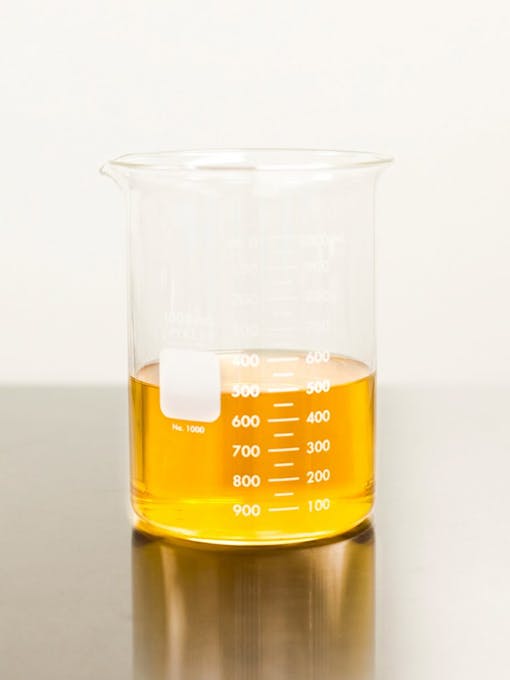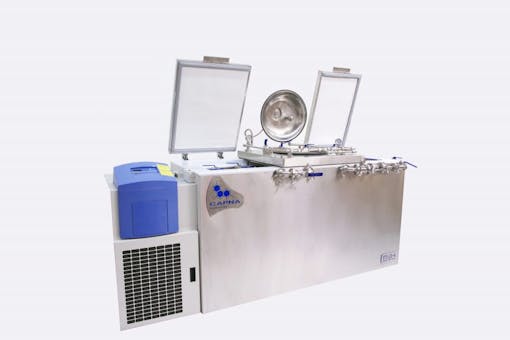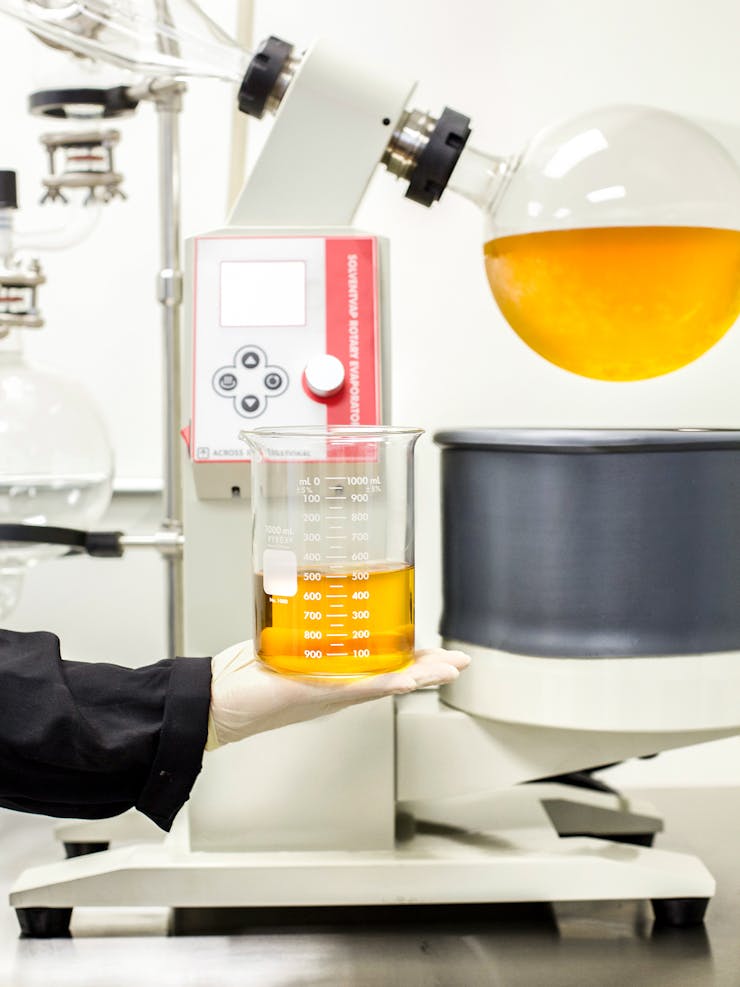This article is sponsored by Capna Fabrication. Capna Fabrication is an industry-leading extraction equipment manufacturer and research facility based in southern California whose mission is to research and develop safe, innovative ethanol extraction technologies for the cannabis industry.
Ethanol is a tried and true solvent that’s been used for centuries to craft tinctures, essential oils, and similar substances. In modern times, this lab-grade alcohol is still among the most commonly deployed solvents, used in products from food flavorings to Rick Simpson Hemp Oil. That latter use is no accident, said Gene Galyuk, chief development officer at Capna Fabrications.

(Courtesy of Capna Fabrication)
“Rick Simpson designed his method around ethanol because he knew that the residual solvent in his medicinal oil would not adversely affect the consumer,” Galyuk said. “He also knew that ethanol was very aggressive at extracting all of the essential constituents in cannabis.”
Today, though the solvent remains the same, new technologies and processes are helping to unlock its true potential.
Ethanol Catches Up
While ethanol is a time-tested solvent, the industry standard today is to use butane or CO2 to create extracts like oil for vape cartridges. But next-generation tools are making food-grade alcohol an increasingly attractive extraction option by turning what has been seen as a weakness of ethanol into a strength.
In recent years, some have viewed ethanol’s structure as a strike against its potential as a solvent. Ethanol molecules have polar and nonpolar ends, making them able to bond with different kinds of molecules on either side. That means that while ethanol draws cannabinoids and terpenes out of the plants, it also brings other players along for the ride.
“There are aldahydes, esthers, ethyls, ketones, and a range of other chemicals that make up the full spectrum of beneficial compounds in cannabis,” said Capna’s principal chemist Erwin Sibal. “Because of the dual role ethanol plays as a solvent, it is capable of extracting the whole of the plant better than any hydrocarbon or CO2.”

(Courtesy of Capna Fabrication)
The downside of a whole-plant oil? It can often look like the whole plant is in there. Ethanol extractions have long had a reputation as being murkier than some of their counterparts crafted by other means, a side effect of molecules like chlorophyll that were extracted along with the cannabinoids.
The Next Generation of Exraction
New ethanol extraction technologies, though, are placing this traditional solvent in the same sphere as popular extractors like butane and CO2. A system like the Ethos 4 by Capna Fabrication can draw 98.5% of the THC from a batch of cannabis, while also leaving the extract fully dewaxed and devoid of chlorophyll. The result is a rich golden hue unlike previous ethanol extracts that still maintains the essential oils and flavonoids found in cannabis flower.

(Courtesy of Capna Fabrication)
Operating at cryo temperatures (that’s really, really, really cold), the Ethos system works by spraying cannabis with 200-proof ethanol at freezing temperatures. After several re-circulations over the material, negative pressure transfers the resulting solution to a collection chamber where additional impurities are removed by micron filtration.
This super-cold, low-pressure means of extraction allows users to skip time-consuming processes like dewaxing and winterization and makes it possible to process up to 48 pounds of plant material in just one eight-hour shift. It’s not just fast, though—the closed loop of ethanol extraction makes it a safe bet as well.
“Fire marshals love the design of the Ethos,” said Galyuk, “It prevents any solvent or flammable vapor from ever exiting the system or venting into the extraction room where the system operates.”
Courtesy of Capna Fabrication on Vimeo.
Ready for Prime Time
Galyuk and his team were initially using a carbon dioxide-based system to craft cannabis extracts. After a few months, though, they got tired of using ethanol to dewax the resulting product. If they were going to have to keep ethanol on-hand anyway, why not try to develop a process that improved on the ways that solvent had been used previously?
Capna’s first few months of working to develop a new ethanol-based extraction system were marked by just enough successes to make the failures all the more frustrating. “For a very long time, we could not replicate our results,” said Galyuk. “Sometimes we would get a solution that was pristine yellow, and other times we would get a solution that was green and obviously contaminated with chlorophyll.”
After about six months of research and development, Capna’s ethanol extractors were fine-tuned and producing a uniform amber extract on every run, letting them focus on automating the process to minimize the potential for human error. Further improvements lowered ethanol consumption, improved system cooling, and minimized the number of electrical components operating near solvents. Years later, the “proof of concept” system for the Ethos extraction technique is still running strong at Capna’s southern California production facility.

(Courtesy of Capna Fabrication)
Once the system was working at full bore, it was intended for internal use only—Ethos-type systems have been the force behind Capna’s extracts. Now, the same technology is being made available to other producers
“Going to market was a hard decision to make, as it was never our intent for these machines,” said Capna Fabrication CEO Vitaly Mekk. “But we know we have something unique, and it makes us very proud to be at the forefront of an industry that, in our opinion, could benefit from our technology.”






